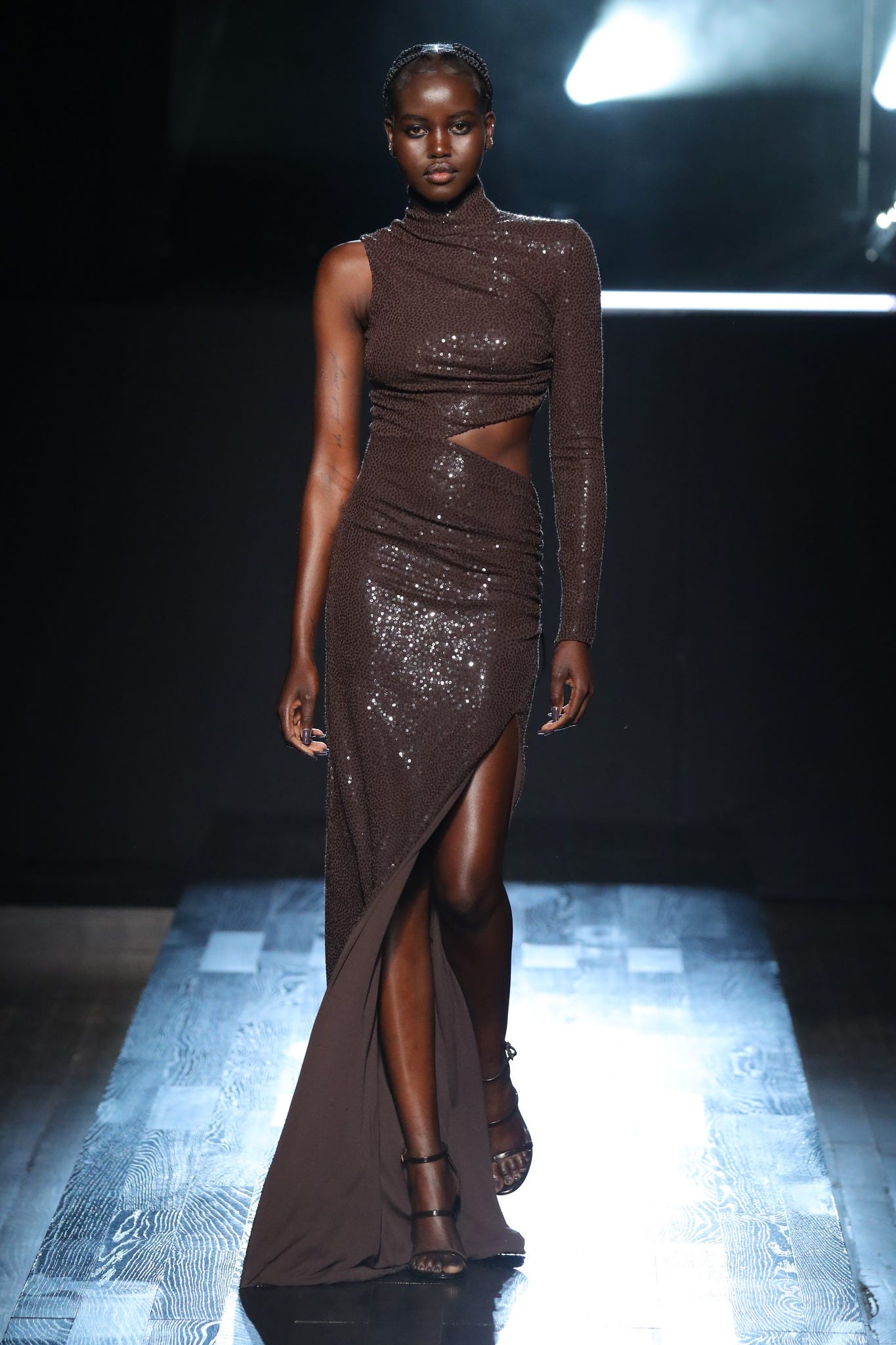
Fashion week trends are an unfortunate inevitability of the industry's seasonal cycle. Even if you ignore the catwalk, the trends will likely end up in your purview as they quickly make their way onto social media and down market to the fast fashion brands. This season, a trend I couldn't help but notice was big bold, loud, and and swooshy sequins. Obviously, sequins aren't new and are incorporated in some capacity almost every season, but they were a fixture this time around.
At Michael Kors, models wore full-length, long sleeve dresses with sequins stitched on every piece. At Altuzarra, plunging necklines were laced in circle gold sequins that shimmered as the models walked, and at LaQuan Smith, models wore bodysuits with jewel-toned sequins all the way up to their necks.

Altuzarra runway at NYFW

LaQuan Smith runway at NYFW

Michael Kors runway at NYFW
Now, we all love a party, and especially a party look, but the problem with sequins is that in most cases, they are made of plastic. I'm not sure about the styles mentioned above, but if we're looking at fashion holistically what comes down the runway is a view into what we'll soon see everywhere. With that, it's likely that if a sequin party dress is made for under $50, it's going to be made out of a bunch of little plastic chips reflecting light off your hips.
Plastic of course, is not biodegradable, and when those sequins end up in the trash, they sit in landfills for decades. What's more is that these little plastic accouterments can be harmful for workers. They have phthalates which make plastic durable. According to the International Journal of Environmental Research and Public Health, long-term exposure to them can impact respiratory health.
Sequins have an interesting history that lead to them being made of plastic. The Smithsonian says sequins were discovered in ancient Egyptian tombs of King Tut. The word itself comes from the Arabic word “sikka” which means “coin” or “minting die.” For centuries, sequins were made out of precious metals until the 1930's when people began making them out of gelatin. The problem was that gelatin melts. So eventually, they began making them out of vinyl plastic where we have landed today.
Luckily, in recent years, many brands have made strides in finding alternatives to traditional plastic sequins. Phillip Lim released a dress made out of seaweed sequins, and the Sustainable Sequin Company creates them out of recycled polyester. With the technology available, there's no reason brands should still use plastic for the sequins. If they can bring a trend market in just a week, then they certainly have the skills and the technology to find alternatives to materials that are harmful to people and the planet.



